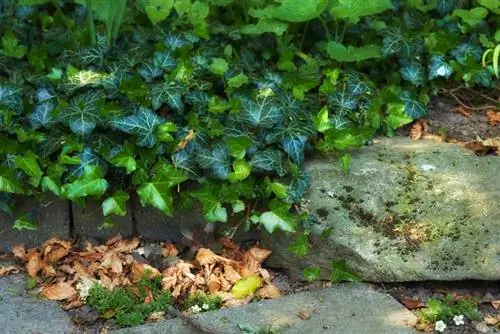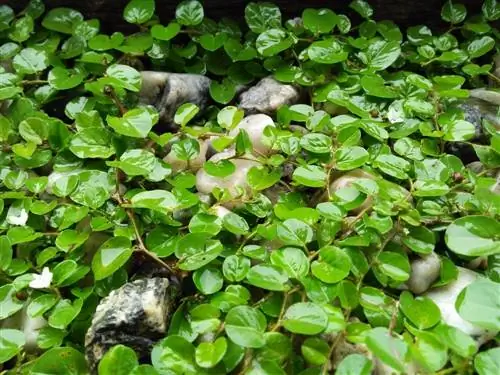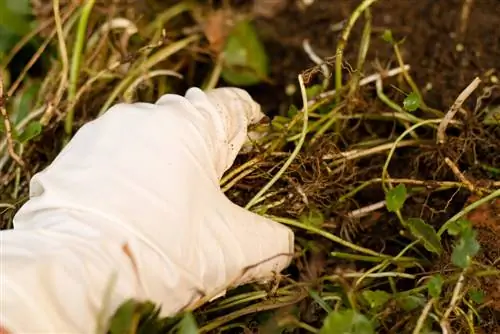- Author admin [email protected].
- Public 2023-12-16 16:46.
- Last modified 2025-01-23 11:21.
Ground cover plants are actually valued for their willingness to cover and therefore weed-inhibiting growth. Sometimes, however, it is too much for the good guys. Clearing ground cover areas is sometimes difficult, but possible.

How can ground cover be removed effectively?
To remove ground cover, you have to laboriously dig up the plants and work deep to get to the root system. Be sure to thoroughly remove both roots and clippings to prevent regrowth.
When ground cover plants have to give way
Even though they are so easy to care for and grateful for, there can be various reasons for wanting to get rid of ground cover plants. On the one hand, their eager growth can at some point become too overwhelming for certain varieties - especially when tirelessly creeping ground cover plants such as pennywort are adjacent to a bed, it can at some point be too much work to keep them under control and prevent them from overgrowing.
Another reason is the redesign of a garden area. Sometimes as a gardener you just need a breath of fresh air in your green oasis - or you just have the desire and ideas for a redesign.
In some cases, a ground cover simply no longer looks beautiful - especially if it has not been cared for for years. Irregular growth and woody branches can be a thorn in the side of garden enthusiasts in the long run.
The reasons for removing ground cover at a glance:
- too invasive growth
- Fancy a redesign
- Unsightliness due to years of neglect
Putting an end to ground cover plants
Given their typical growth, removing ground cover plants can be a real challenge - and at least at first it feels like a Sisyphean task. Because if the ground cover is removed purely mechanically, it is actually hardly possible to get rid of all the plant remains. So you have to expect annoying urges to greet you again and again later.
The most natural way to remove a ground cover is by digging it up. As a rule, you cannot avoid this tedious work. Depending on the variety, you have to work quite deeply in order to capture the root system as completely as possible. This can be very tiring, especially for species that form strong, underground or above-ground runners, such as ysander or ivy.
If the ground cover is too stubborn, you can of course also resort to herbicide - from an ecological point of view, however, this is an emergency solution that should be avoided if possible.
Remove cutting residues thoroughly
In order to have as little rework as possible, you should make sure to thoroughly remove not only the roots, but also the cuttings and dispose of them in the organic waste bin. In particular, dead remnants of branches growing above ground can also resettle on the compost!






